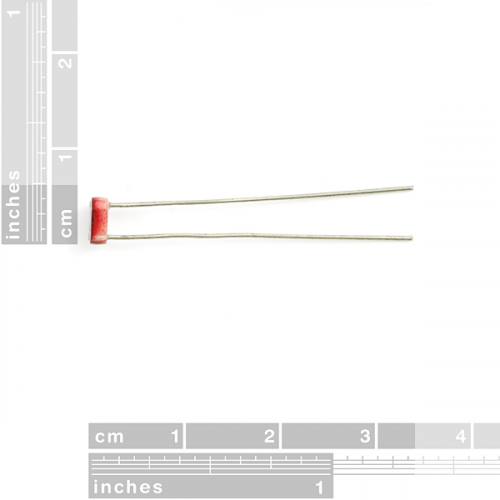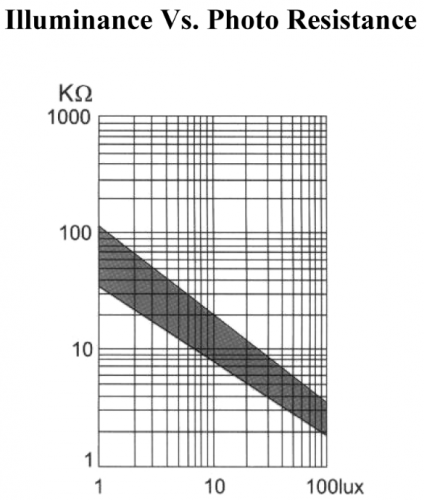Photocell Hookup Guide
Photocell Overview
The photocell, sometimes referred to as a photoresistor or light-dependent resistor (LDR), is a two-terminal, resistive component that increases or decreases its resistance depending on the light it senses. They're available in a variety of shapes, sizes, and form factors; the mini photocell in our catalog features a 5x4.3mm head, and through-hole legs that can be soldered into a PCB or inserted into a breadboard.
In pitch black conditions, the resistance of most photocells will measure in the megaohms range. The typical light resistance of photocells varies by component. The mini photocell, for example, usually produces a resistance between 8-20kΩ in normal lighting conditions.
The graph below demonstrates the mini photocell's illumination and resistance relationship:
As you can tell from the graph above, these sensor's aren't designed for absolute lux-measurement accuracy -- they leave a lot of room for interpretation. But, by measuring the photocell's resistance, they can provide a relative idea of a room's lighting conditions, or tell us if the sun has risen or set.

